Even the misfires are noisy
PLUS: The Bounce goes on a day trip to the hockey, and Olympic sports start to make their presence felt.
It was a noisy weekend, with most of it coming from Penrose, where the Warriors somehow turned a clunky, slightly-out-of-sync performance into a thrilling 22-22 draw.
Maybe the Warriors will rue not getting the golden point, but midway through the first half you wouldn’t have backed them to get within 10 of fast-starting Manly.
“A draw was a good result from 16-0 down,” said coach Andrew Webster. “The big thing we’re talking about in there is why are we 16-0 down? What have we got to fix?
“But obviously we did great to come back, we never gave up. I’m super proud of that.”
The Warriors weren’t quite right all night, yet somehow burnished their reputation.
There were a couple of cracking games of Super Rugby, yet they passed by on a gentle zephyr of apathy.
Case in point, the regulation-time finish of the Waratahs-Crusaders match was every bit as inexplicable and dramatic as the Warriors. On this occasion the Waratahs kicked off three points behind the Crusaders with time up and somehow won a penalty easily as crazy and avoidable as the one Manly would concede 20 hours later.
The biggest difference was that the golden point period in Sydney actually ended with gold as the Waratahs beat the Crusaders 43-40 on Will Harrison drop goal.
In Wellington the following night, the Hurricanes were mighty impressive in beating the Chiefs by more than the 36-23 scoreline suggested. The second of TJ Perenara’s two tries was a thing of beauty, as was Asafo Aumua’s charge to the line.
It was good footy, but the picture I carry in my mind’s eye when I think back on the game is Brett Cameron converting Aumua’s try in front of a bank of empty yellow seats.
Why the different reactions to what the Warriors are doing as opposed to what the Hurricanes are doing?
Scotty Stevenson traverses a lot of ground in this column. Read the whole thing if you can because it makes a lot of sense, but if you’re time poor, here’s a couple of the pointier points.
You only have to look at the patrons packed into Mount Smart to understand the true value rugby league places on being part of a club. League gets it, in a way union, in this country at least, seemingly can’t get its head around. Saturday night at Mount Smart felt like the hottest ticket in sport, a match you couldn’t possibly miss. Saturday night at the Cake Tin most certainly did not...
What club exactly can one belong to in rugby?
The Super Rugby teams have only recently (and retroactively) labelled themselves ‘clubs’, and it remains patently unclear what membership looks like.
The provincial teams were once representative of geographical allegiance, but the provincial clubs have been carved out and bypassed as feeder teams in favour of a select cabal of professionally styled school teams collectively supplying raw bulk ingredients to semi-professional teams that could hardly be accused of being reflective of local development.
The clubs are dying, the rep teams are not clubs, and the super teams are clubs largely because that’s what they call themselves.
Stevenson is right in that NRL clubs, many of the original ones based on suburban identities, foster a sense of belonging that has not been replicated in rugby, yet I remember back to the early days of the Super 12 and it felt like they had that.
It’s just that the vast majority of big decisions Sanzaar have made since then, whether it’s been structural or marketing, have been woefully misguided.
Whether it’s the franchise bases alienating their own traditional provincial catchments, rest breaks for the best players, nonsensical expansion or weird points and playoff systems, Sanzaar leaders have struck out nearly every time they’ve gone to the plate to have a swing.
There’s a massive reason the Warriors meant more on Saturday evening than a couple of cracking Super Rugby games: it actually meant something. That point won (or lost, depending on your viewpoint) could be critical come season end.
The entire Super Rugby round robin feels less like a competition and more like an extended All Blacks trial. The Chiefs lost to the Hurricanes…
So what? They’re going to make the playoffs anyway. We’ve known that from week one.
The Crusaders should be dead and buried at 1-6 but they’ve got every chance of making it, too. That doesn’t generate excitement, only eye-rolls.
The Bounce is proud to introduce K3 Legal as a partner for the Monday Mash-up for 2024. Click on the link to learn more about their legal services.
The Super Rugby Aupiki final, won 24-18 by the Blues over Chiefs Manawa, was blessed with a dramatic finish, but was also overshadowed when it fell into the Warriors’ orbit.
The competition organisers needed to be far more nimble to give this match the live platform it warranted, not just a social media platform.
Nothing about Blues CEOs Andrew Hore’s justification for not shifting the final sounded compelling, especially not this bit.
Hore said the Aupiki timing owed to Eden Park being unavailable until after 3pm…
“There were limited options around [the] venue and the next thing you probably would’ve said is, ‘Why are our athletes not playing at Eden Park for a final?’
“There’s an element here too that Eden Park is where our athletes wanted to play. They said the end of their season - to be able to play at Eden Park - was important to them. It offers really good high-performance facilities, and ultimately, this is a high-performance programme and so we gave them that choice.”
So are you saying that it was a 50,000-seat venue that knew that more than 45,000 of its seats would be unused that was dictating the schedule? Or were the players dictating the schedule because they wanted nice changing rooms?
Is anybody actually running this show?
***
Meanwhile, Black Ferns and Blues skipper Ruahei Demant has called for a merger with Australia’s Super W.
“Opening the competition up to play the Super W teams would also allow Australia to get better and we need Aussie to be better internationally because we play them the most. That will also give our coaches the opportunity to rotate our squads a bit more.”
The Bounce caught some live sport over the weekend.
It wasn’t the Warriors - couldn’t get tickets (though I have to confess to feeling all vinegary when I saw how many empty seats there were at Mt Smart).
It wasn’t Super Rugby. I’m not as down on the tournament as most, but even if there was a men’s game near me, I’m strictly a TV viewer for night rugby and the Aupiki final clashed with the Warriors so that was a hard no.
Instead we headed not far down the road to the National Hockey Centre to take in the second Black Sticks Women’s test against Japan.
It was a pleasant diversion, with both the good and indifferent of live sport neatly wrapped up in an afternoon.
Hockey New Zealand is proud of the NHC and you can see why. It looks a very good facility if you’re a player or a coach. It has five full-sized turfs, four of them new, and a modern pavilion that also acts as a small stand that overlooks the No 1 field. As a high-performance facility it would tick most of the boxes, especially with High Performance Sport New Zealand’s Millennium Centre just a few drag-flicks up the road.
As a spectator, it’s questionable.
It’s neither convenient, nor pretty, housed as it is in one of Auckland’s least lovely outposts, jammed between a soulless industrial estate and a wastewater treatment plant that greedily accepts the effluent of more than 200,000 people1. That’s by the by, though. Urban land is not cheap and smaller sports being pushed to the margins is hardly a new story.
I was surprised by the lack of seating though. There were far more subscribers than seats and it seems implausible that a venue calling itself a national stadium would not erect more bleachers, even if they’re temporary, along the side of the ground facing the pavilion.
As it was, I spent the whole game standing and watching through a chain link fence. It was like watching a game being played in a prison yard. It might even partly explain why the ground announcer felt compelled to mention with five minutes to go that the crowd was “subdued”.
As for the hockey? It was pretty good. The Black Sticks won 2-1 after drawing the first test on Saturday 1-1.
They were better on Sunday and probably should have done more with their possession than the 1-0 lead they held with five minutes to go.
A missed assignment on defence allowed Japan a crazy amount of room on the right wing and the late equaliser was a hammer blow. Credit a young New Zealand team with the gumption to strike right back through a Rose Tynan reverse. They almost handed the lead right back with seconds remaining, so you could say the action was heavily backloaded.
New Zealand women’s hockey is in an interesting place at the moment. Money is tight, as evidenced by the withdrawal from the FIH Pro League, and likely to get tighter after the failure to qualify for Paris.
Obviously that failure comes with a review because, well, there’s an entire HPSNZ-driven cottage industry built up around reviews and the beast needs to be fed. Losing in the 21st century is never about being beaten by a better team or not performing to potential, it’s about curating identifiable learnings through performance and pathways analysis, or some other such pseudo-intellectual, job-justifying flimflam.
Here’s my review (which HPSNZ and HNZ can have, gratis):
“Hockey is a competitive international sport that is increasingly two-tiered. The lowland European countries that have professional infrastructures, for example, have inherent advantages over a country like New Zealand that can afford to pay its best players about $100 a week to train. With a bit of luck and good management, New Zealand will have enough world-class players at any given time to be competitive. Sometimes they might not.
“The end.”
My untrained eye did not spy a whole heap of world-class players yesterday, with many of New Zealand’s best unavailable, but you could do worse than build your future around Olivia Shannon, 22, who is already a quality player.
Have to confess that every time I hear about a promising young New Zealand swimmer moving through water quickly, my first thought is: “Okay, wake me up when we win an Olympic medal please.”
Grossly unfair, I know, but just consider it a defence mechanism against seemingly inevitable crushing of hopes at the world’s biggest event.
But perhaps Taiko Torepe-Ormsby is different. Sure hope so.
His is a mighty impressive achievement.
Contesting his 50m freestyle heat at the Hawke’s Bay Regional Aquatics Centre, Torepe-Ormsby was a cut above, leaving the crowd on their feet and in disbelief as he produced the fastest 50 metre freestyle swim ever by a New Zealander, touching the wall in 21.86 seconds.
The time is under the Olympic qualification standard and is the first time a New Zealander has [gone under] 22 seconds.
“I’m lost for words to be honest, I’ve dreamed about this moment for my whole life,” he said.
An even better pointer for precious metal in Paris came from the velodrome in Milton, Canada, where Ellesse Andrews won the keirin, after finishing second in the sprint.
It was the 24-year-old's first major meet since breaking her collarbone in a fall during the year’s opening Nations Cup event, in Adelaide in January…
“It’s a long way to travel but it’s better than going to Europe so I’m super happy with the outcome,” she said, before outlining her plans in the lead-up to the Olympics.
“I’m heading home tomorrow and just getting in some really solid training for three months. I head over to Europe in July and then over to Paris then.”
***
The spring classics season moved to the Netherlands for the Amstel Gold race. The women’s finish was utterly ridiculous.
Click on this link and fast-forward to five minutes and spare a thought for Lorena Wiebes. Oops.
There was a sense of inevitability about the US Masters, with big Texan Scottie Scheffler dominating on his way to a four-shot win.
I have questions:
Is that good for golf?
If golf is better off as a sport with a dominant figure a la Tiger Woods, Jack Nicklaus, Ben Hogan and Maurice Flitcroft, and does Scottie Scheffler have the charisma to pull it off?
More importantly, perhaps, does the 27-year-old have the game to stand the test of time? I can think of a bunch of golfers who were brilliant over long periods but never quite managed that sustained dominance in majors, such as Nick Price, Nick Faldo, Ernie Els, Vijay Singh, Rory McIlroy and maybe even Phil Mickelson, though six majors has you at least knocking on the door of the pantheon.
Wrote ESPN:
If it wasn’t the case before, Sunday’s victory further sets the stage for the sport’s future. Every player, whether on the PGA Tour or LIV Golf, is chasing the seemingly unflappable Scheffler, who may be the closest thing the sport has had since Woods.
Scheffler’s win gives the sport not only a far-and-away favourite at every event, but also two compelling chases: Everyone else’s quest to beat him and Scheffler’s quest for more.
“He makes us better,” the runner-up, Ludvig Aberg said. “He makes you want to beat him.”
As the sun washed over the 18th green Sunday while an impassioned Scheffler celebrated, his 6-foot-3 frame created its own long Augusta shadow. After this week, that is where every other professional golfer resides.
Also inevitable are the LIV v PGA Tour player comparisons.
LIV had 13 competitors and eight made the cut, which is pretty good. They were shut out of the top five, but Bryson DeChambeau and Cam Smith were tied for sixth, Tyrell Hatton for ninth and Patrick Reed for 12th.
From a strictly golf perspective, I don’t know if you can look at it and say playing 54-hole cut-free tournaments on second-tier courses has had a profound effect on individuals ability to compete.
Further burnishing its portfolio of tourist attractions, Rosedale also has a “reserve” on a former landfill that is closed to the public due to its toxic gas and liquid run-off.

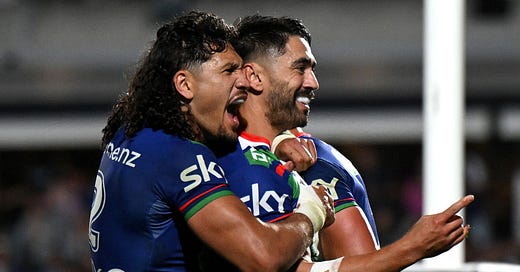



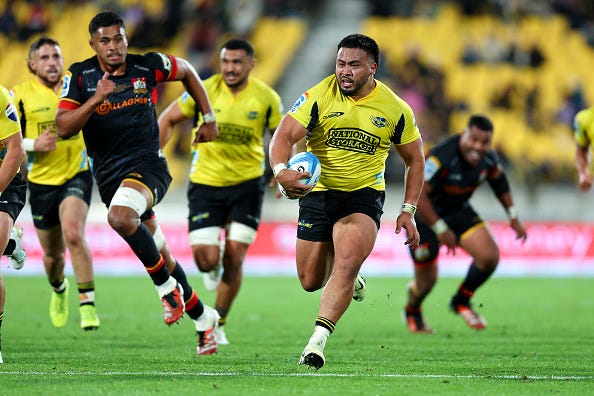

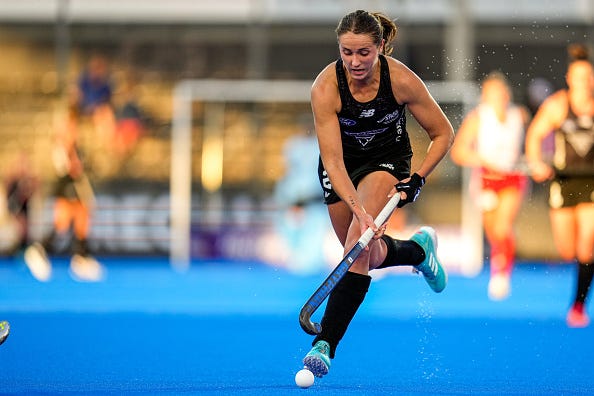
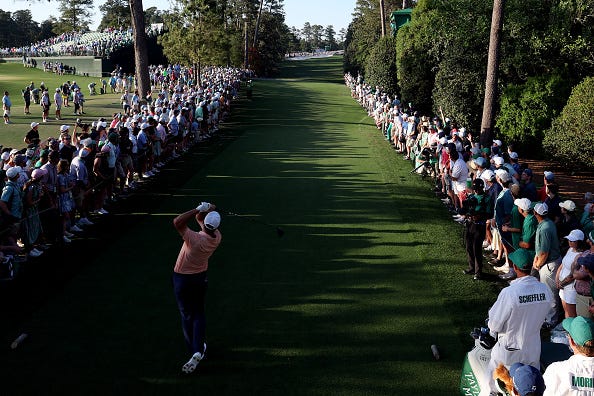
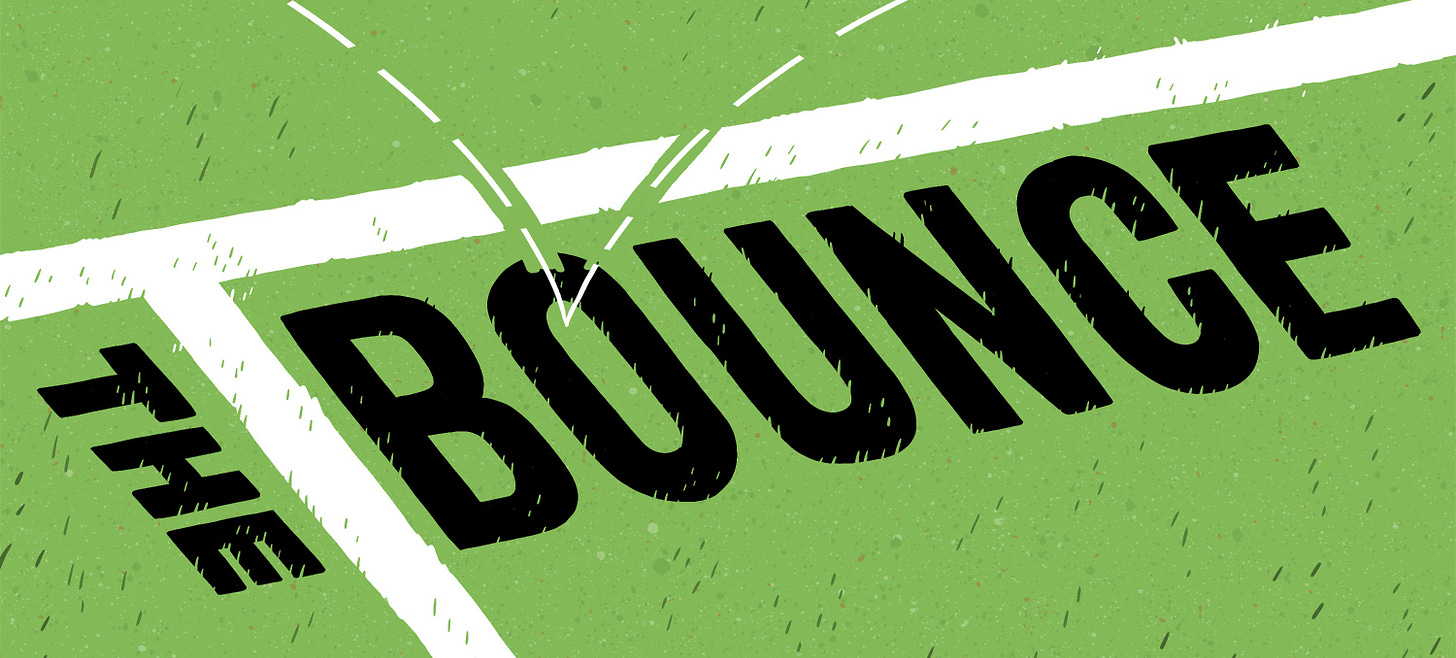
Golf loves to jump at shadows with anointing the new Tiger or the new dominant force. It was going to be Jordan Speith, then Rory, then Dustin Johnson, then Brooks Koepka, then Justin Thomas, then Collin Morikawa, then Rahm, and you get my drift. Scheffler is a jet, and his major record is insanely good, but it wasn't long ago they were saying he can't putt. I think golf is absolutely better with a dominant figure to chase, but the talent pool is reasonably deep - and no one is Tiger.
Another busy weekend nicely summed up here.
While all that was going on, Nathan Smith scored a half-century and took four wickets in seven balls in the County Championship. https://www.espncricinfo.com/series/county-championship-division-one-2024-1410191/nottinghamshire-vs-worcestershire-8th-match-1410200/match-report
Can't help but feel he should have several international caps to his name already.